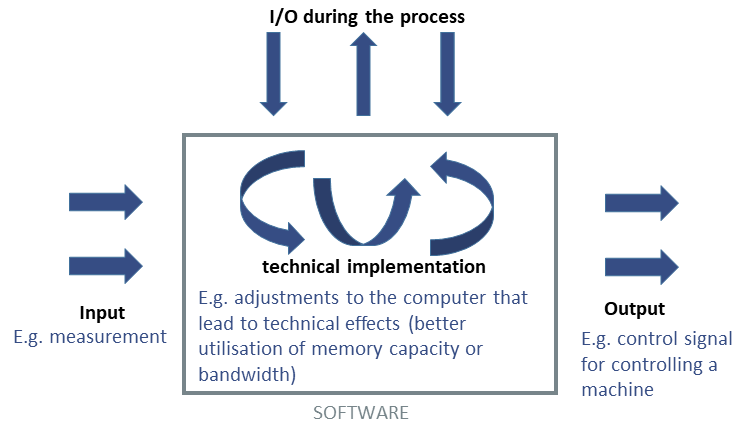This decision concerns an invention comprising a mathematical method. The invention includes the input of sensor signals. However, the Board decided that this was not relevant to the question of whether the non-technical features contribute to the technical character, because there is no technical interaction of the mathematical method on the output side, or no technical implementation of the mathematical method. Nevertheless, the Board considered the non-technical features in the inventive step assessment and found them obvious.
Object of the Invention
- method for processing sensor signals representing a wetness event in an absorbent article
- Claim 1 differs from the closest prior art in that it is comprising certain mathematical method steps (comparing vectors with representative vectors of clusters, determining the most similar, allocating the vector to a cluster, based on a mathematical model) to indicate volume of exudate in the absorbent article in a wetness event
Respondent (patent owner):
- the mathematical method steps contribute to a technical effect
- relying on point 99 of the Reasons in G 1/19, claim 1 was directed to an indirect measurement or at least to an accurate estimation of the exudate volume collected in an absorbent article
Board (part I):
- claim only relates to the processing and analysis of sensor signals received from a sensor and results in a more or less accurate estimation of the volume of collected exudate
- the results obtained by the claimed method are not necessarily more accurate, since the accuracy would depend on many factors (size of training sets, number and type of elements/variables constituting the representative vectors, etc.), none of which are defined in claim 1
- whether the processing method in the present case may be qualified as an indirect measurement envisaged may be left undecided here, for reasons mentioned below
- it may just be added that the determination of the volume of a single or of multiple successive wetness events does not provide any technical effect in the sense that the so determined volume necessarily affects the control of any component of the system composed, for example, of an absorbent article comprising sensors and an appropriate processor
- further, the method does not necessarily imply any action on some other system or a modification of the operation of the system executing the claimed method going beyond the normal physical interaction between the program and the computer
- -> absent of any technical effect
Board (part II) (assumption of a technical effect):
- considering in favour of the respondent, that the estimation of the volume of exudate could be seen as a technical effect, to which the distinguishing feature step (mathematical method) further contributs
- objective technical problem could only be seen in providing an alternative method of processing sensor signals representing wetness events in an absorbent article
- irrespective of whether the processing method could be considered to involve a technical effect, the subject-matter of claim 1 lacks an inventive step in view of the obvious combination of the method known from the closest prior art with common general knowledge
- –> no inventive step
Conclusion
The below figure shows according to G 1/19, point 85 and 86 how and when “technical effects” or “technical interactions” based on inter alia non-technical features may occur in the context of a computer-implemented process.
In this decision T 2803/18, input data of a sensor is claimed. However, the claimed mathematical method/non-technical features do not lead to a technical effect on the output side or to a technical effect based on a technical implementation. Therefore, according to the Board, the claimed method could not be considered to involve an inventive step. However, presumably because of the sensor/ sensor signals on the input side, the Board assumed a technical effect and then examined the inventive step based on the non-technical features.


